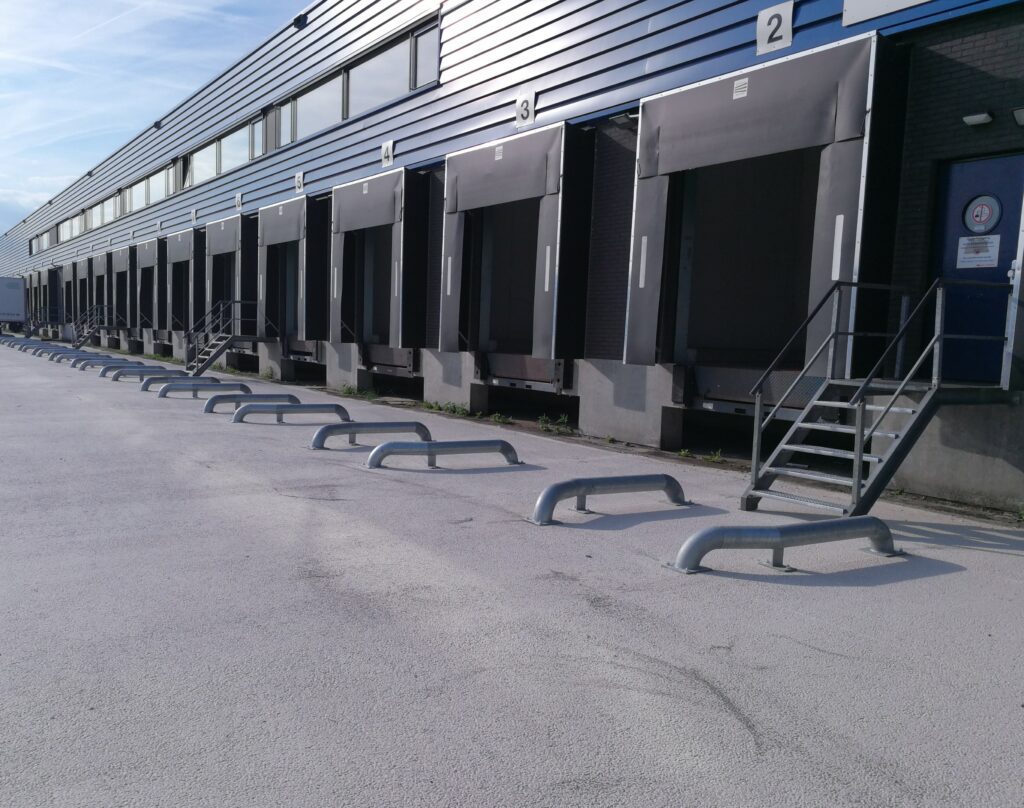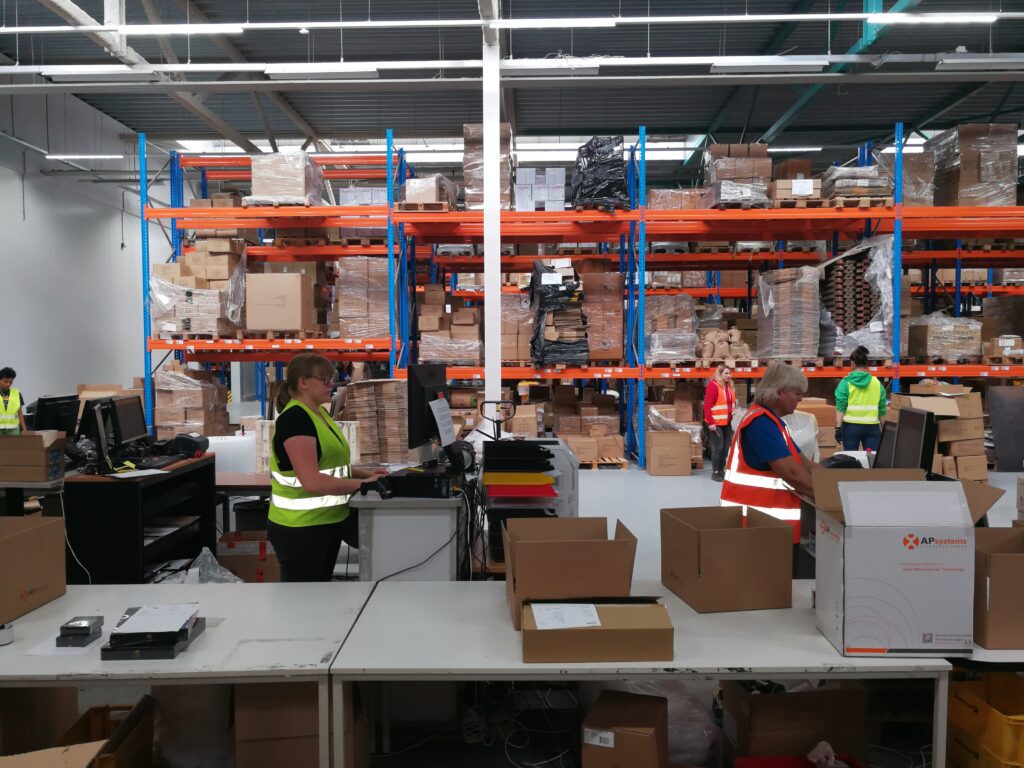If you want to distribute your products in Europe, you are most likely looking for warehousing in Europe. One International Distribution Center from where you can ship all your products into Europe. But how do you find a warehouse in Europe that is suitable for your needs? What kind of requirements should you take into account?

12 loadingdocks at the outbound section, 4 at the inbound section.
Warehousing in Europe refers to the storage and management of goods and products in warehouses located throughout the continent of Europe. Europe is a diverse and well-developed region, and its warehousing industry plays a critical role in supply chain logistics and distribution. Here are some key points about warehousing in Europe:
- Types of Warehouses: Europe has a wide variety of warehouses, including public warehouses, private warehouses, distribution centers, and fulfillment centers. The types of warehouses vary based on the specific needs of businesses and the nature of the goods being stored. Think of cold storage or dangerous goods or can you settle with an ambient environment?
- Strategic Location: Many European countries are strategically located for international trade, making them ideal hubs for warehousing and distribution. Countries like Germany, the Netherlands, and Belgium are known for their central location and excellent transportation infrastructure. Especially the Netherlands with Europe’s biggest port Rotterdam is known as the Gateway to Europe.
- Transportation Infrastructure: Europe boasts a well-developed transportation network, which includes an extensive road network, efficient rail systems, and numerous ports. Especially from Rotterdan their are rivers which allows you to transport your goods on inland vessels into Europe. This infrastructure makes it easier for goods to be transported to and from warehouses.
- Regulations: Warehousing in Europe is subject to various regulations and standards, including those related to safety, environmental concerns, and customs. It’s important for businesses to comply with these regulations to operate legally.
- E-commerce Growth: The growth of e-commerce has significantly impacted the warehousing industry in Europe. E-commerce businesses often require specialized fulfillment centers to meet the demands of online shoppers. So you might want to check if B2C distribution is possible.

Packingstation at Kolibri Logistiek for B2C and B2B orders.
- Sustainability: There is a growing emphasis on sustainability in European warehousing. Many companies are adopting green practices to reduce their carbon footprint and minimize environmental impact.
- Technology Adoption: Warehouses in Europe are increasingly embracing technology to optimize operations. This includes the use of warehouse management systems (WMS), automation, and robotics to enhance efficiency and accuracy.
- Labor Force: The availability and cost of labor can vary from one European country to another. This factor often influences the location decisions for companies establishing warehouses in Europe.
- Cold Storage: Given the diversity of goods stored in European warehouses, there is a significant demand for cold storage facilities, particularly for perishable goods and pharmaceuticals.
- Economic Factors: Economic conditions in Europe can influence the warehousing industry. Factors like economic growth, inflation, and currency exchange rates can impact supply chain decisions. But also the political situation in a country may affect your choice.
- Third-Party Logistics (3PL) Providers: Many businesses in Europe outsource their warehousing and logistics needs to third-party logistics providers. These 3PLs offer expertise and specialized services to manage and optimize supply chains. So if you not only need storage and transportation but also orderpicking, labeling and or packaging than this should be a requirement to go for.

Labeling of cosmetic products
- Brexit Impact: The United Kingdom’s exit from the European Union (Brexit) has led to changes in customs procedures and trade regulations, which have implications for warehousing and distribution in Europe, especially for goods moving between the UK and the EU. So a warehouse in the UK for your European distributing is not handy as you have to pay import duties twice; one for arriving goods in the UK and second for the goods you will be shipping to Europe.
In summary, warehousing in Europe is a complex and dynamic industry, influenced by factors such as location, transportation infrastructure, regulations, and technological advancements. It plays a crucial role in supporting the supply chains of various industries, including manufacturing, retail, and e-commerce, within the European market and beyond.



